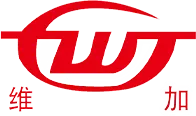- Afrikaans
- Albanian
- Amharic
- Arabic
- Armenian
- Azerbaijani
- Basque
- Belarusian
- Bengali
- Bosnian
- Bulgarian
- Catalan
- Cebuano
- Corsican
- Croatian
- Czech
- Danish
- Dutch
- English
- Esperanto
- Estonian
- Finnish
- French
- Frisian
- Galician
- Georgian
- German
- Greek
- Gujarati
- Haitian Creole
- hausa
- hawaiian
- Hebrew
- Hindi
- Miao
- Hungarian
- Icelandic
- igbo
- Indonesian
- irish
- Italian
- Japanese
- Javanese
- Kannada
- kazakh
- Khmer
- Rwandese
- Korean
- Kurdish
- Kyrgyz
- Lao
- Latin
- Latvian
- Lithuanian
- Luxembourgish
- Macedonian
- Malgashi
- Malay
- Malayalam
- Maltese
- Maori
- Marathi
- Mongolian
- Myanmar
- Nepali
- Norwegian
- Norwegian
- Occitan
- Pashto
- Persian
- Polish
- Portuguese
- Punjabi
- Romanian
- Russian
- Samoan
- Scottish Gaelic
- Serbian
- Sesotho
- Shona
- Sindhi
- Sinhala
- Slovak
- Slovenian
- Somali
- Spanish
- Sundanese
- Swahili
- Swedish
- Tagalog
- Tajik
- Tamil
- Tatar
- Telugu
- Thai
- Turkish
- Turkmen
- Ukrainian
- Urdu
- Uighur
- Uzbek
- Vietnamese
- Welsh
- Bantu
- Yiddish
- Yoruba
- Zulu
api tubing and casing chart
Understanding API Tubing and Casing Charts
In the oil and gas industry, the terminology and specifications surrounding drilling and production equipment can be quite intricate. Among the crucial components of drilling operations are the tubing and casing, which play vital roles in ensuring the safe and efficient extraction of hydrocarbons. API tubing and casing charts serve as essential tools for engineers and technicians to navigate the various standards and specifications required for these components.
What is API?
The American Petroleum Institute (API) is a prominent organization that establishes industry standards for the oil and natural gas sector. API standards aid in maintaining safety, efficiency, and interoperability in petroleum operations. The API has developed specifications for various equipment, including tubes and casings, that help standardize measurements, shapes, sizes, and materials used in the industry.
Tubing and Casing An Overview
Before delving into the specifics of API tubing and casing charts, it’s essential to understand the role of tubing and casing in oil and gas operations. Casing refers to the series of pipes that are installed in the borehole to maintain its integrity after drilling. This keeps the wellbore open and prevents collapse, protecting both the well and the aquifers. Additionally, casing serves to isolate fluids and gases from the surrounding geological formations.
On the other hand, tubing is used to transport the hydrocarbons from the reservoir to the surface. It is installed inside the casing and is vital for the production phase. Tubing must withstand high pressures and corrosive environments, making its material and construction critical for efficient operation.
The Role of API Tubing and Casing Charts
api tubing and casing chart

API tubing and casing charts provide a comprehensive overview of the various specifications, dimensions, and weights of tubing and casing products. These charts are valuable for drilling engineers, reservoir engineers, and other industry professionals who need to choose appropriate components for specific drilling and production projects.
One of the primary aspects highlighted in these charts is the outside diameter (OD) and the nominal weight of the pipes. The OD is significant as it determines the size of the hole that needs to be drilled, which, in turn, affects drilling efficiency and costs. The nominal weight corresponds to the pressure and structural integrity requirements for the tubing or casing in use.
Another crucial element included in the API charts is the grade of the tubing and casing. Different grades denote varying levels of strength and resistance to corrosion and other damaging conditions. Typical grades include L-80, P-110, and J-55, each suitable for specific applications and geological conditions. The selection of the correct material grade is paramount, as it directly impacts the safety and effectiveness of the drilling operation.
Practical Applications
When an oil company embarks on exploratory drilling, the selection of proper tubing and casing using API charts is critical. For instance, during the planning phase, engineers can refer to these charts to determine the appropriate casing size and weight needed to endure the estimated pressures and environmental conditions of the drilled formation. They can also use this data to anticipate costs and timelines associated with drilling operations.
Moreover, during operational phases, the charts facilitate quick verification of specifications, ensuring that all components in use comply with API standards. This adherence to standardized practices enhances safety and reduces the risk of equipment failure during drilling and production activities.
Conclusion
In summary, API tubing and casing charts are indispensable resources in the oil and gas industry. They streamline the process of selecting appropriate materials for drilling and production operations, significantly contributing to the overall safety and effectiveness of these endeavors. As the industry continues to evolve and face new challenges, the reliance on standardized charts and specifications remains a cornerstone of successful oil and gas extraction. Ultimately, understanding and utilizing these charts can lead to more efficient operations and better resource management, which is critical in today's energy sector.
-
Tubing Pup Joints: Essential Components for Oil and Gas OperationsNewsJul.10,2025
-
Pup Joints: Essential Components for Reliable Drilling OperationsNewsJul.10,2025
-
Pipe Couplings: Connecting Your World EfficientlyNewsJul.10,2025
-
Mastering Oilfield Operations with Quality Tubing and CasingNewsJul.10,2025
-
High-Quality Casing Couplings for Every NeedNewsJul.10,2025
-
Boost Your Drilling Efficiency with Premium Crossover Tools & Seating NipplesNewsJul.10,2025







